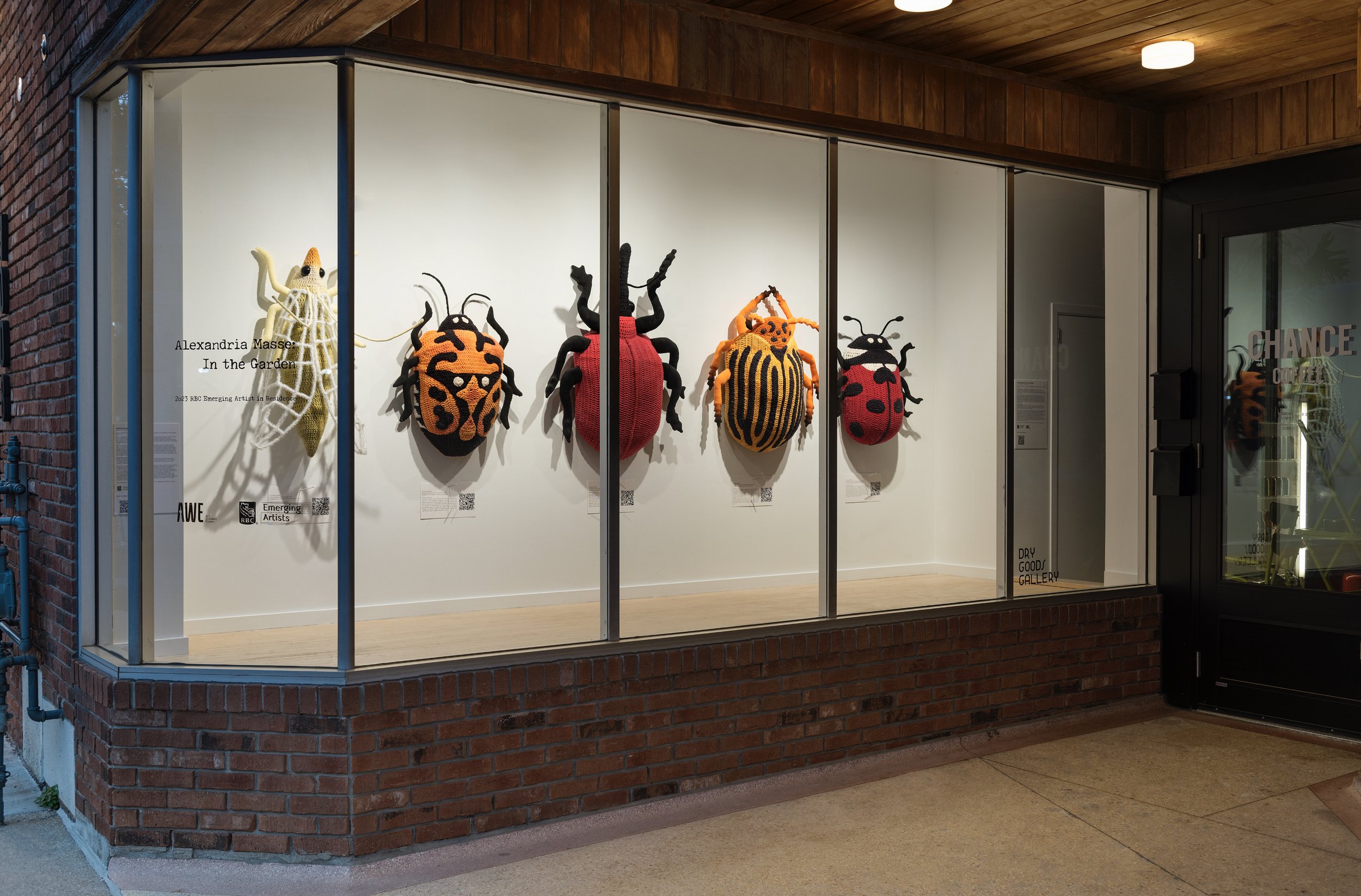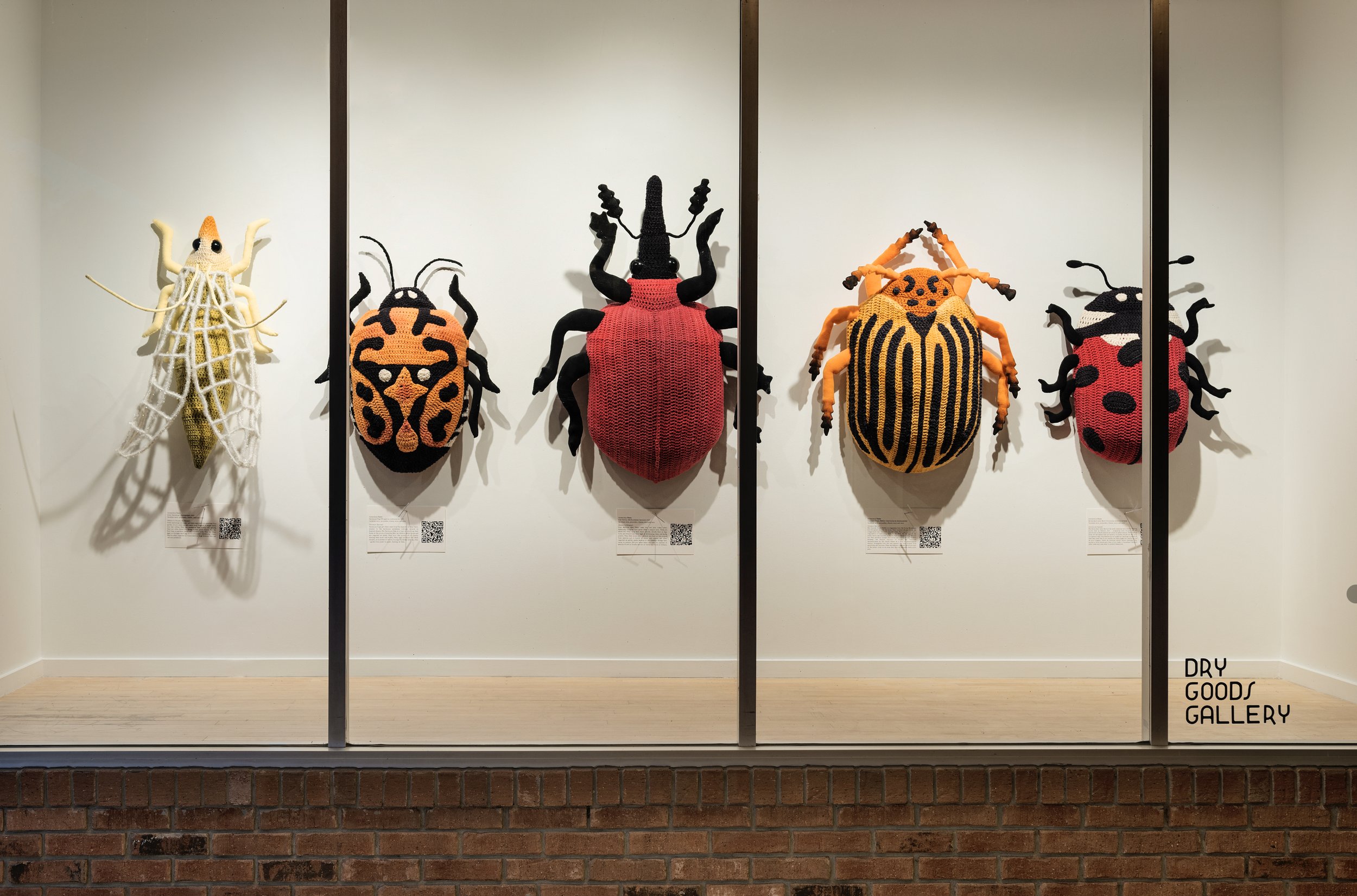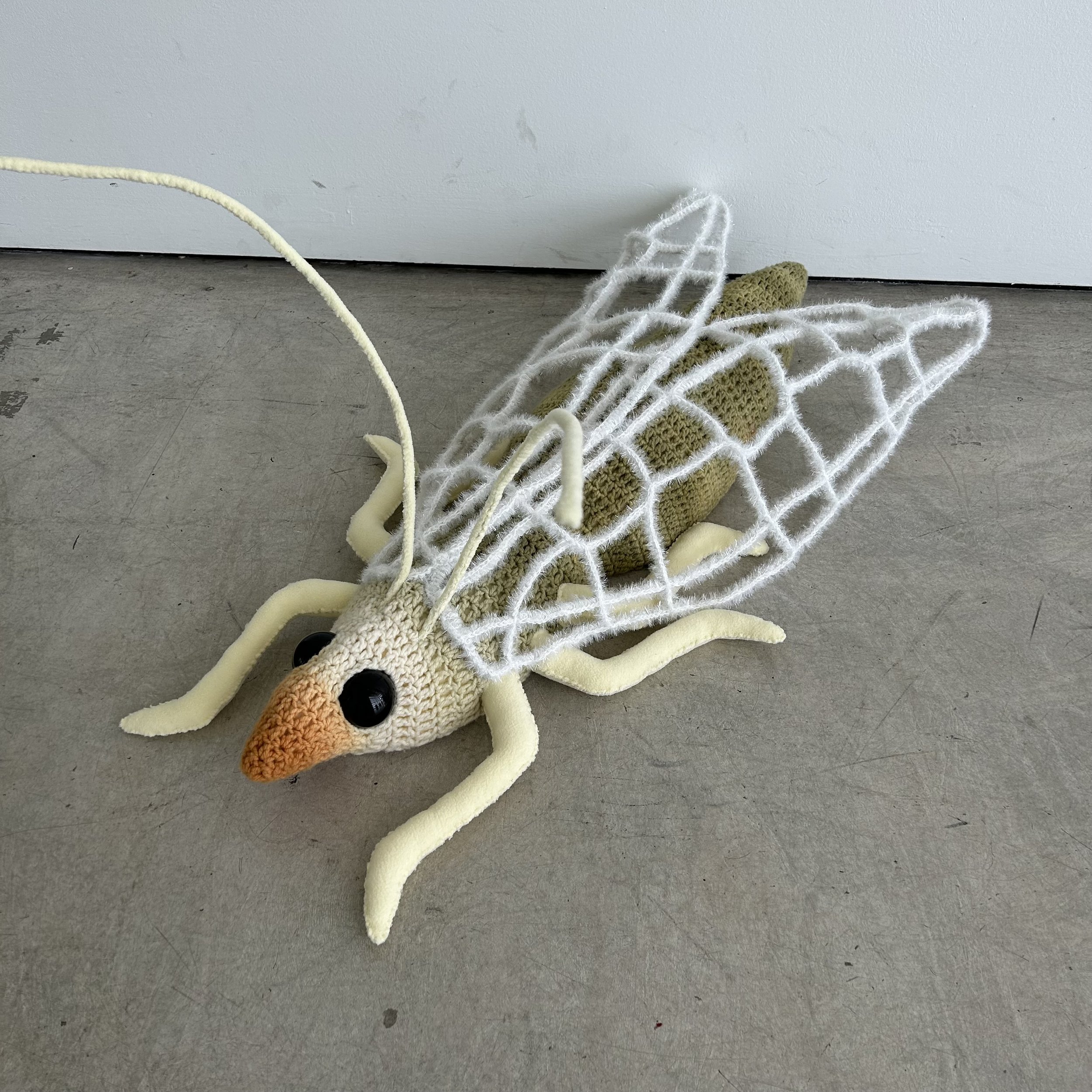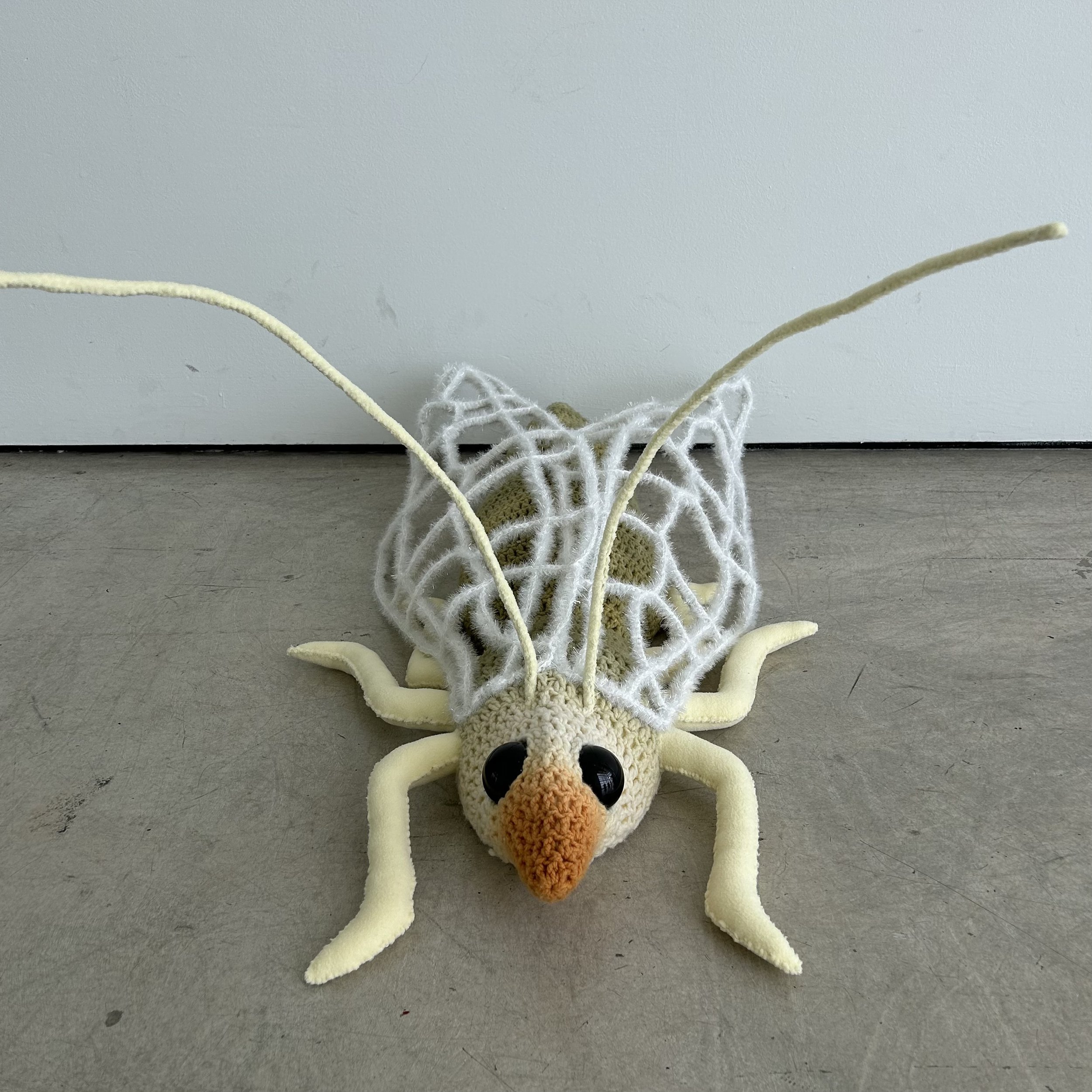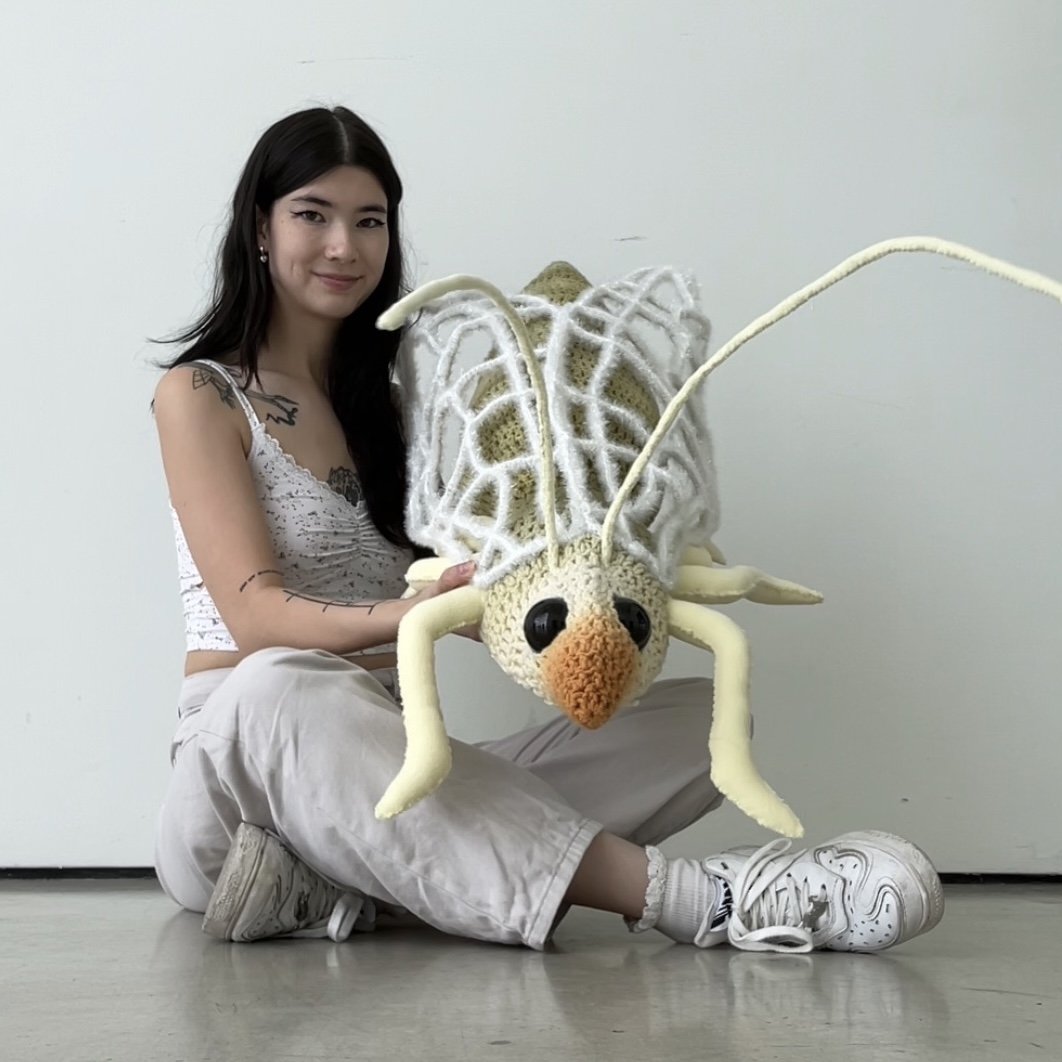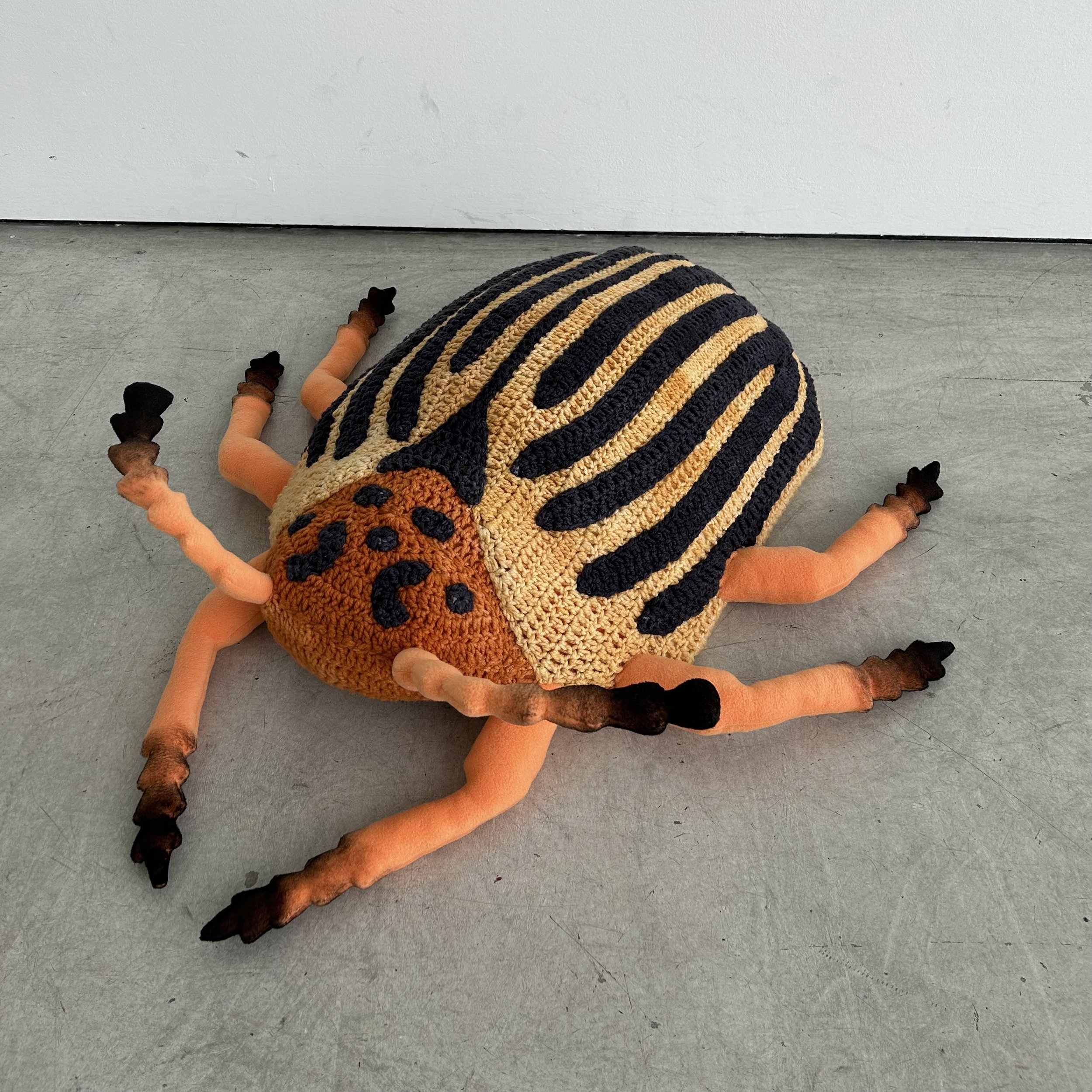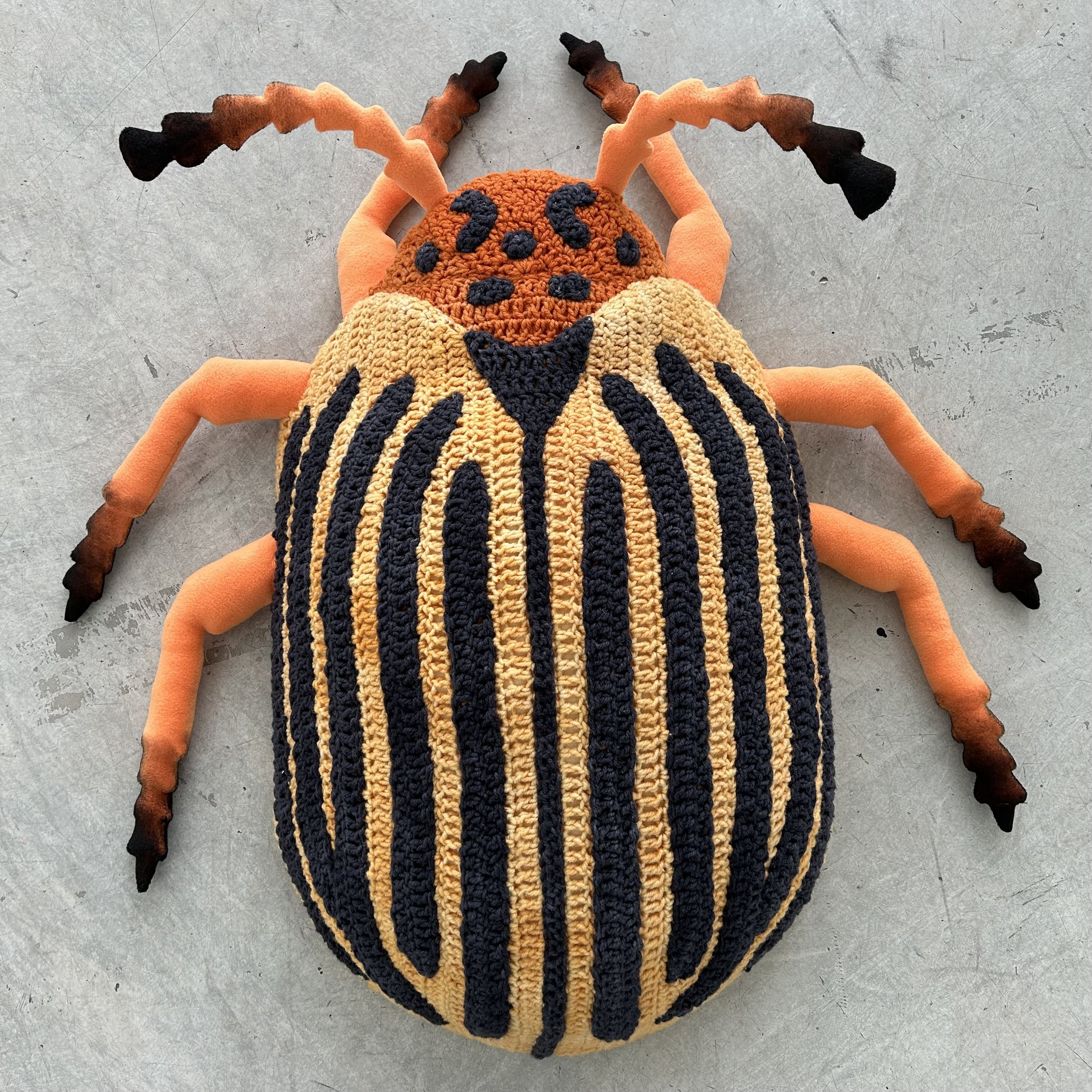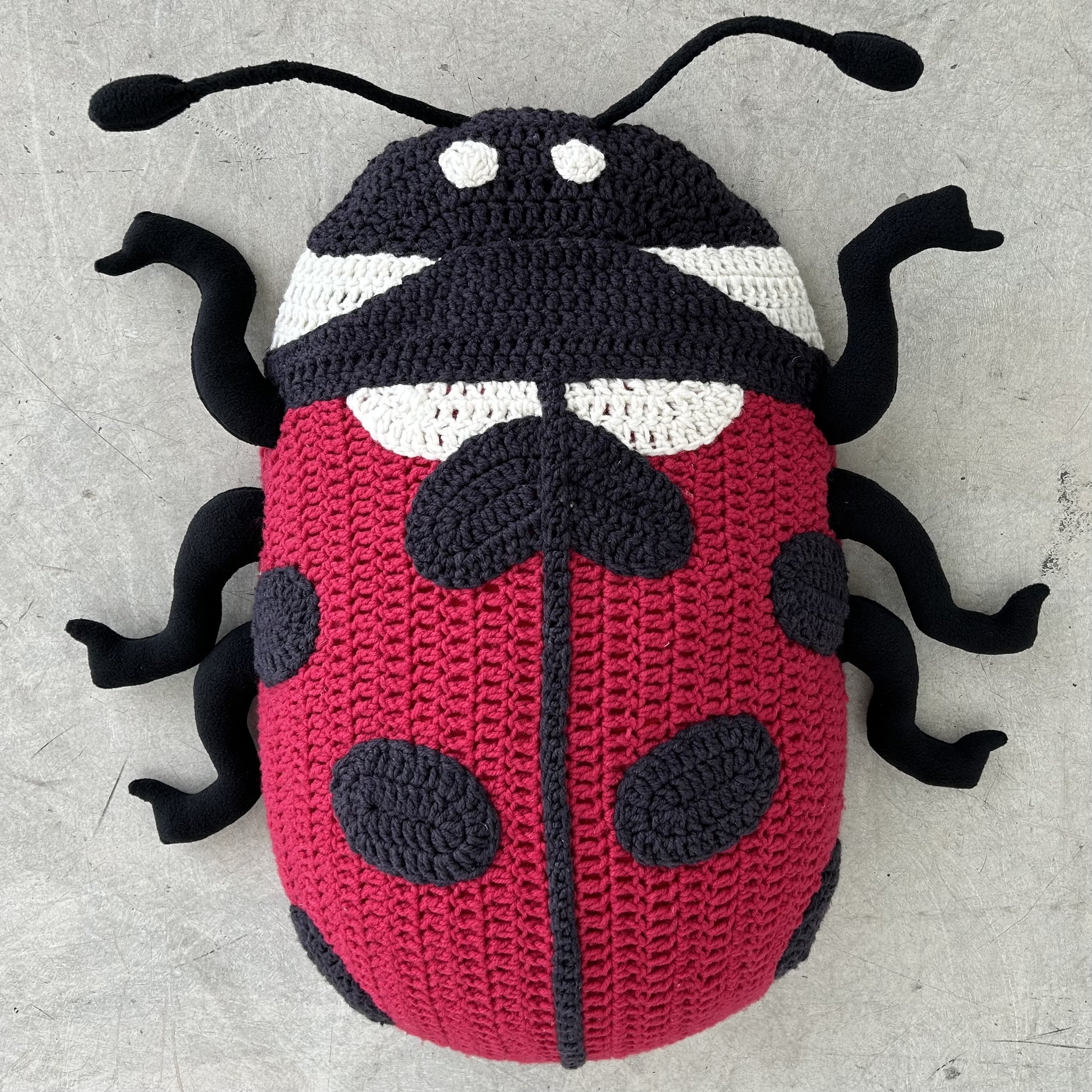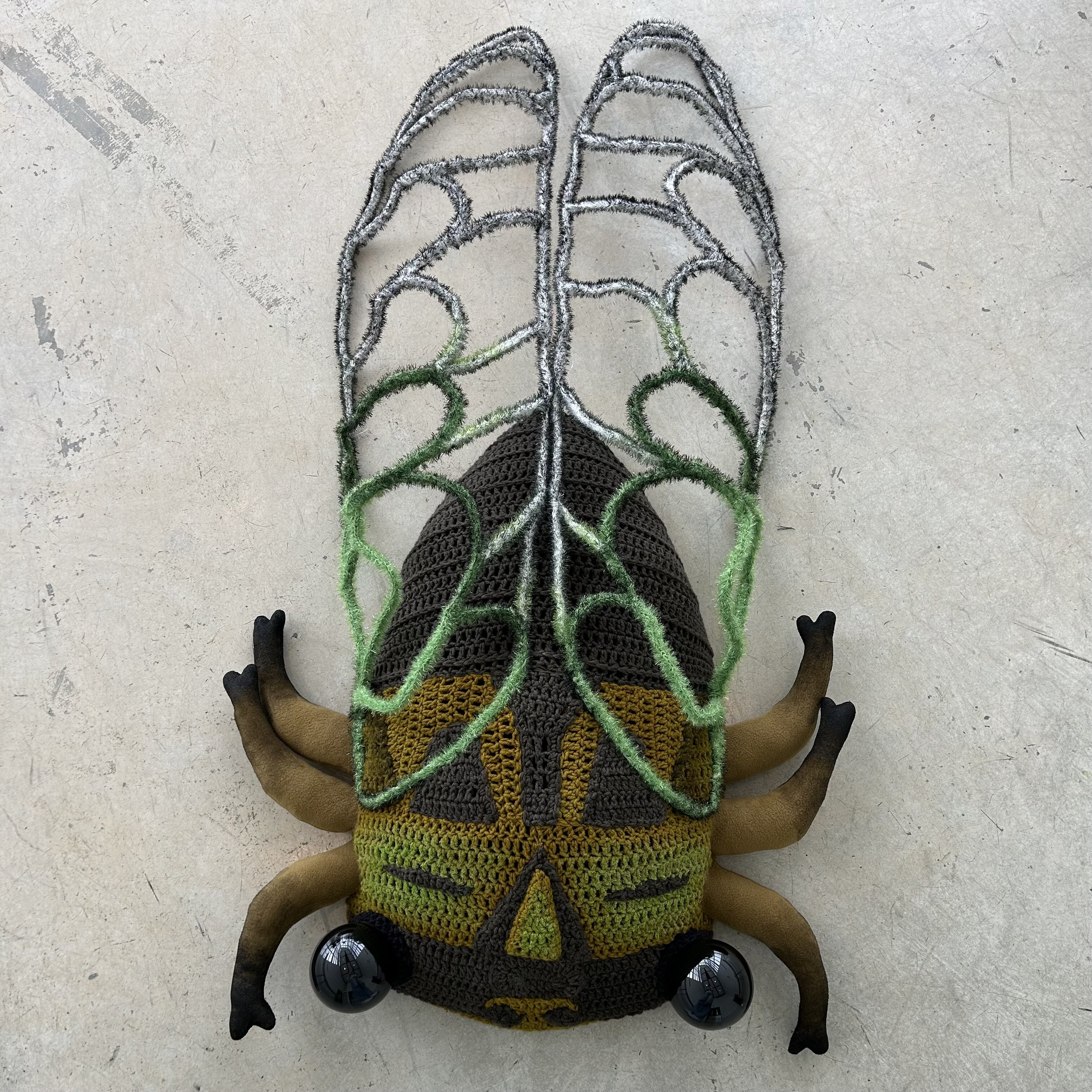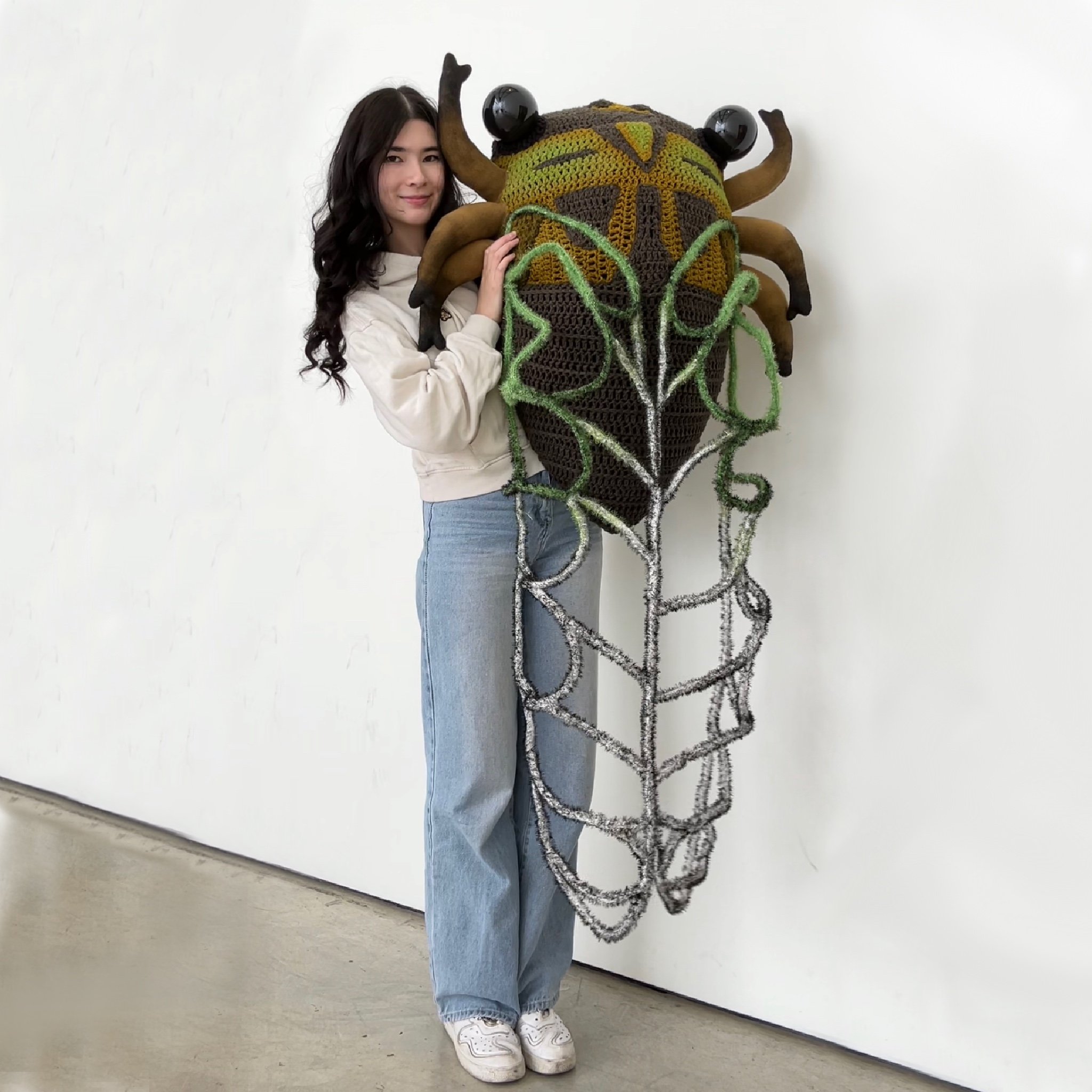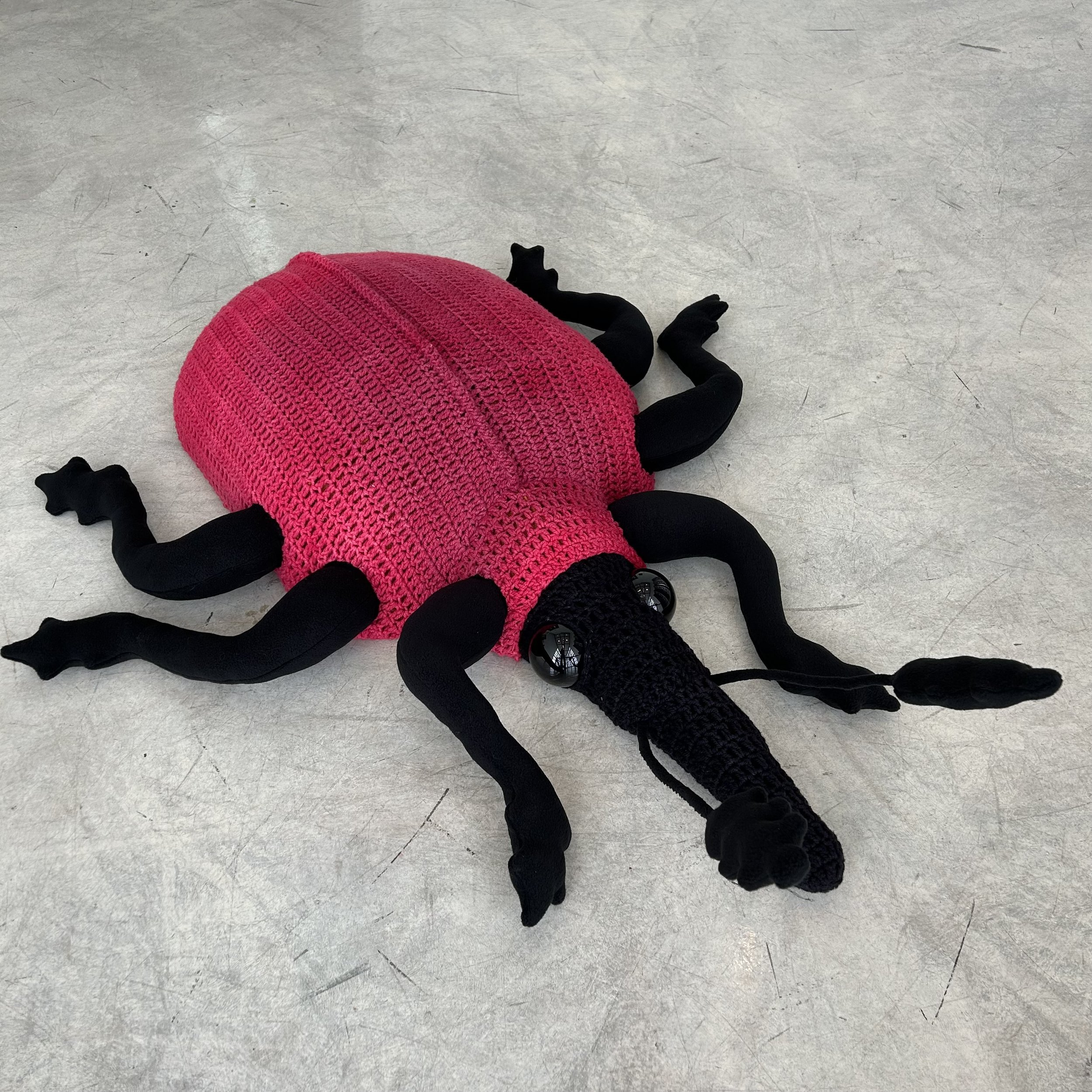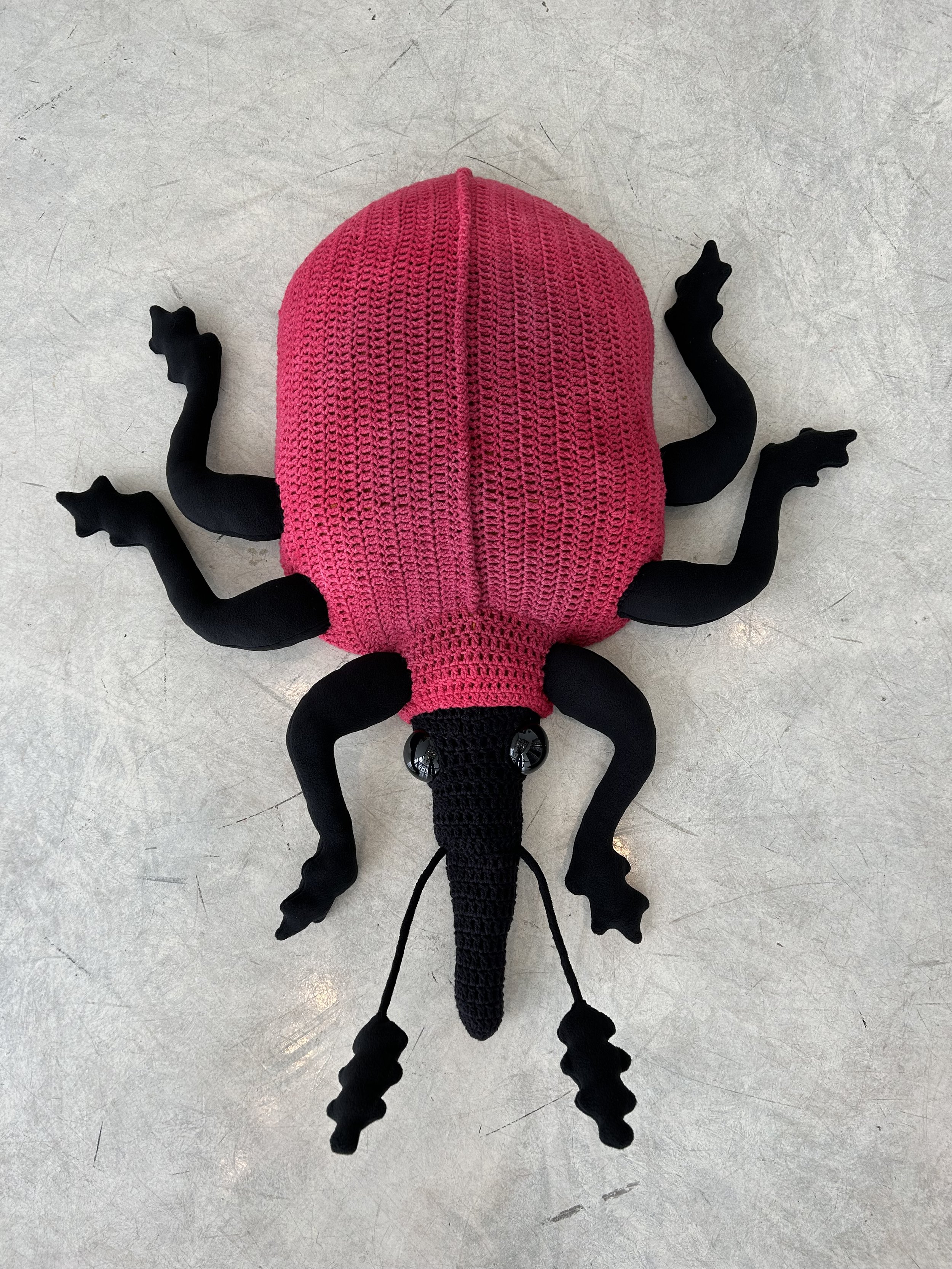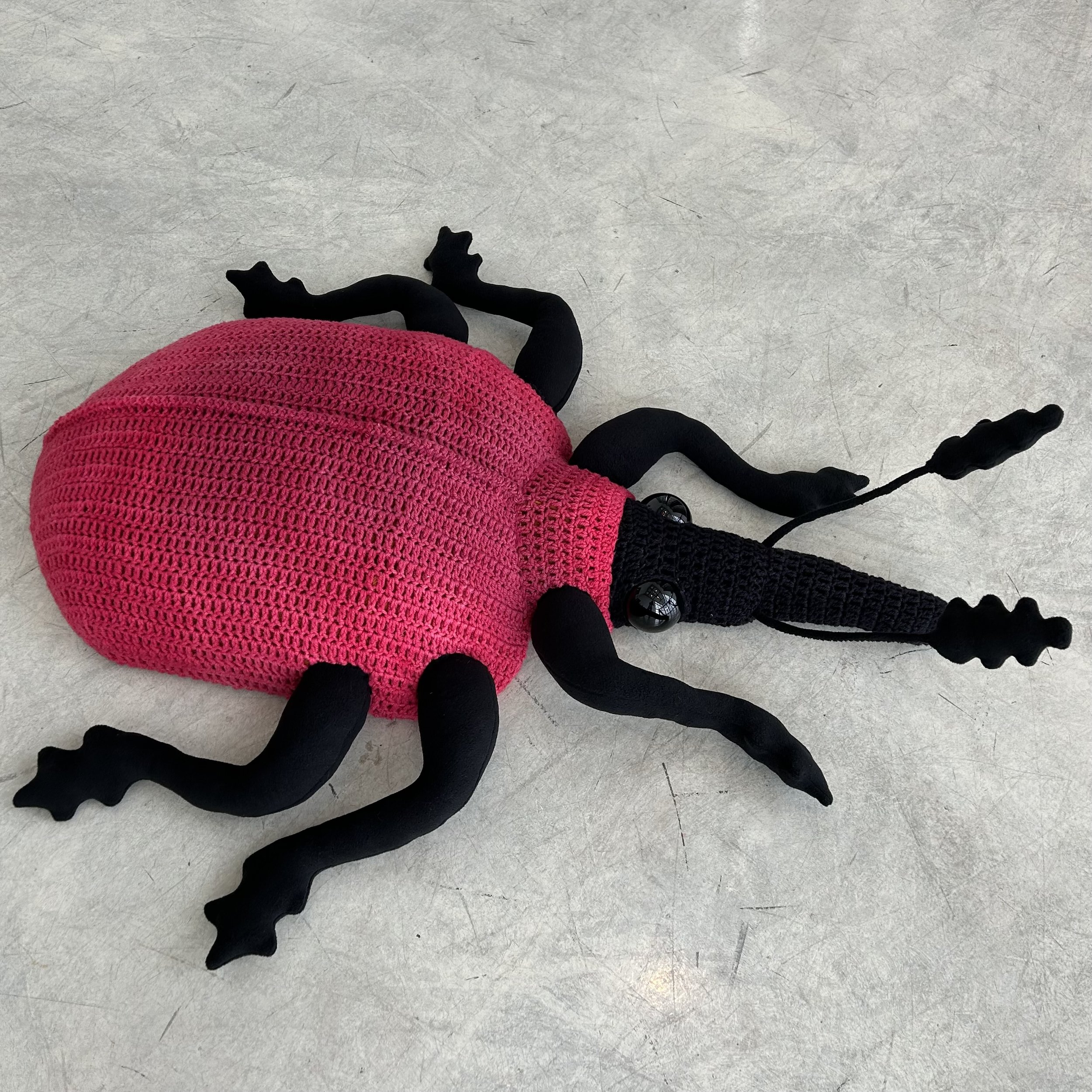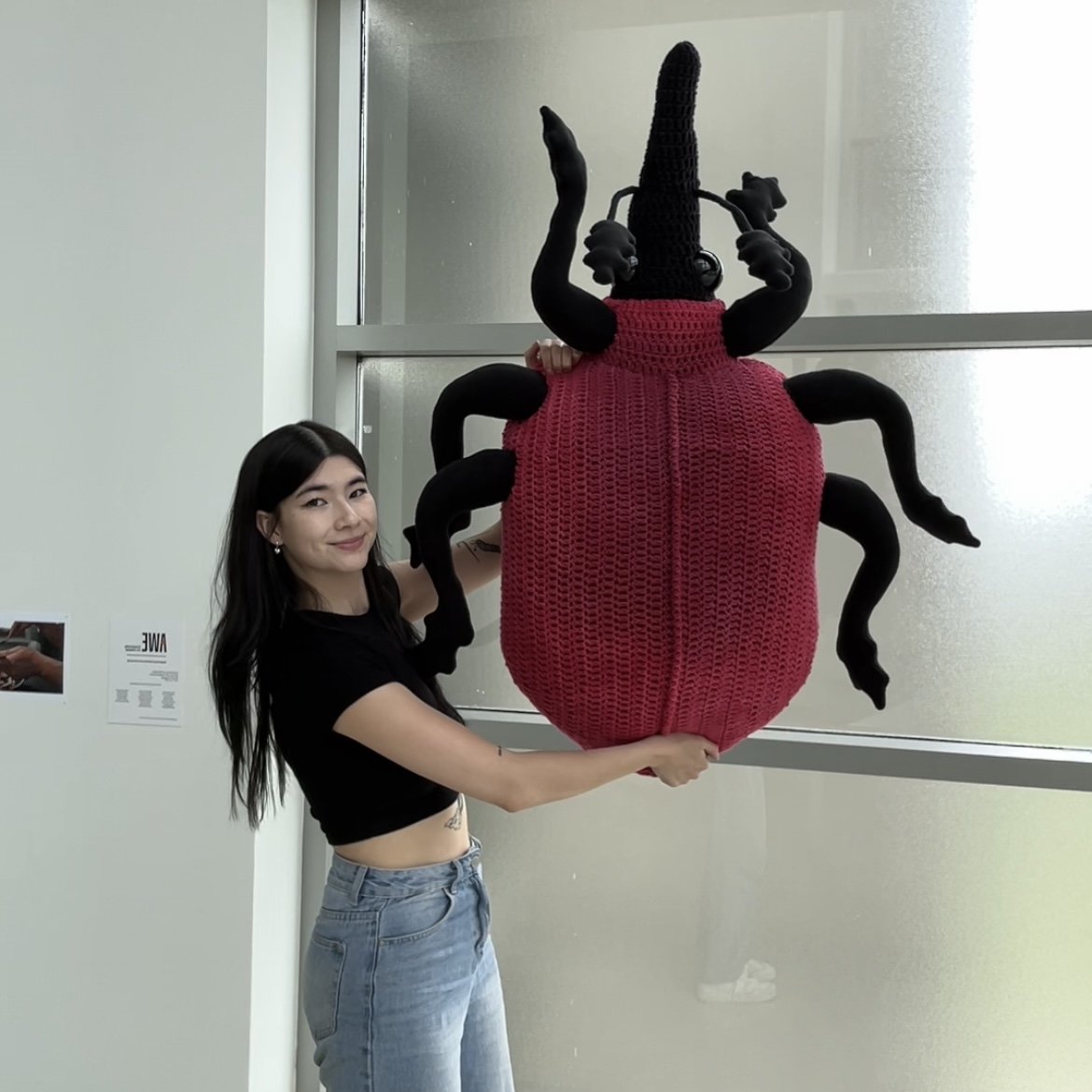
In the Garden
August 19, 2023 – November 16, 2023
Dry Goods Gallery, 1012 Drouillard Road, Ford City
Funded by the RBC Emerging Artists Grant at Art Windsor Essex and the Ontario Arts Council.
-
In the Garden is a collection of insects that are both native and invasive. Each one is inspired by an existing insect found in Masse’s backyard and scaled up to giant proportions. Utilizing scale to accentuate details not often caught by the naked eye, the works aim to familiarize the viewers with living creatures that we wouldn't normally pause to explore.
Beyond their aesthetic appeal, these sculptures serve as a tribute to the generations of women who passed down the traditional arts of knitting, crocheting, and sewing. Elevating these domestic crafts to the realm of art challenges conventional perceptions, inviting viewers to reconsider the value and significance of matriarchal skillsets. Masse’s crochet insects are a way to reclaim craft practices in spaces outside of the home.
Crafted with care, each insect is meticulously soft sculpted. The exterior is crocheted 100% Canadian wool she hand dyed at home, the interior is made of reclaimed textiles and filled with polyfil. Drawing from nature's palette, the intricate color patterns mirror those found in the real insects, while steel wire-reinforced appendages maintain their lifelike form. Mounted on plywood bases with magnetic backing, these sculptures seamlessly integrate into any space. Each insect is accompanied by an ID tag securely pinned to the wall with a giant pin, providing viewers with fascinating insights into each insect's characteristics and habitat. Additionally, an innovative QR code feature allows viewers to instantly access information about the real-life counterpart of each sculpture, offering a dynamic and interactive experience.
Exhibition photos by Frank Piccolo
Green Lacewing
(Chrysopidae)
Canadian wool, polyester, fleece, wood and wire
97cm x 55cm x 20cm
-
Native to Pacific Northwest
Green Lacewings are small and mean-spirited but essential to a garden. If you hold one and smell your fingers, it might smell like bad coffee. They are predators that mostly eat aphids; they are often known for being clumsy, goofy fliers. You can find them in gardens, parks and forested areas. They lay their eggs on foliage; each egg is on a filament resembling a hair. They’re often regarded as temperamental bugs because they are natural predators.
Colorado Potato Beetle
(Leptinotarsa decemlineata)
Canadian wool, polyester, fleece, wood and wire
78cm x 55cm x 25cm
-
Invasive Species
The Colorado Potato Beetle is originally from the Rocky Mountains, but it’s spread all over the world. Their roundish striped bodies and orange heads make them look very decorated. This bug is a pest with a long history of destroying crops. In the 1950s, the war against the potato beetle was launched in Warsaw Pact countries during the cold war. This operation alleged this beetle was introduced into Eastern Germany, the Peoples Republic of Poland and Communist Czechoslovakia by the United States as a form of entomological warfare. Propaganda from the time claimed they were dropped from parachutes and balloons. These beetles were ruthless and killed half of the potato crops in an area; they were an extremely destructive pest.
Seven-Spot Ladybird
(Coccinella septempunctata)
Canadian wool, polyester, fleece, wood and wire
68cm x 45cm x 20cm
-
(Introduced Species)
The Seven-Spot Lady Bird is the most commonly encountered ladybug you’ll find in Ontario. It's originally from Europe and was introduced to North America as a form of aphid control. This ladybug feeds off the aphids that are harmful to plants, adults can eat up to 100 aphids a day. Lady Beetles are so bright as a warning to predators that they taste bad. If you handle one there might be a smelly liquid on your fingers, that's an alkaloid called reflex bleeding. They secrete a fluid which give them a foul taste. A threatened ladybird often times will play dead to protect themselves.
Dog-Day Cicada
(Leptinotarsa decemlineata)
Canadian wool, polyester, fleece, wood and wire
130cm x 55cm x 20cm
-
You may know cicadas for being noisy little pests that make a high pitched wine. Its name dog day refers to the dog days of summer, when these insects are most active. After mating the female lays her eggs on the bark of a tree, once they hatch the nymphs drop to the ground and burrow underground to feed on sap for the winter. during the hot summer the nymphs emerge from the soil and climb up a tree trunk and shed their old exoskeleton and emerge as winged adults you and I are familiar with. They can be found in the great plains of Canada, United States, Midwestern United States, the Great Lakes region and New England. If you’re from any of those areas I’m sure you assosiate the hottest part of the summer with these guys.
Rose Weevil
(Merhynchites bicolor)
Canadian wool, polyester, fleece, wood and wire
110cm x 50cm x 20cm
-
Native to Ontario
Rose Weevils, like their name are red like roses, their distinctly bulging eyes gives them a unique look. They are known for their long dark black snouts. Adults feed on rose buds, and females lay their eggs on developing roses, and berry plants. They chew holes into rosebuds and feed on the pollen. Rose weevils put a bunch of holes into plants are often regarded as garden pests because of the cosmetic damage they cause to plants. Did you know there are over 800 species of weevils found in Canada and 400 of those are found in Ontario.
Harlequin Bug
(Murgantia histrionica)
Canadian wool, polyester, fleece, wood and wire
75cm x 40cm x 20cm
-
Invasive Species
Harlequin bugs get their name from the diamond on their back, similar to the harlequin pantomime costumes covered in diamond shapes. The Harlequin Bug is a type of stink bug that feeds on the juices of plants; they can destroy entire crops and are regarded as pests. They suck the juices out of plants, leaving them brown and wilted. Their eggs are black and white striped, in clutches of twelve. During the warmer seasons, they migrate from plant to plant, feeding on them.

